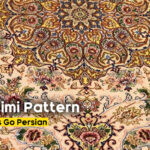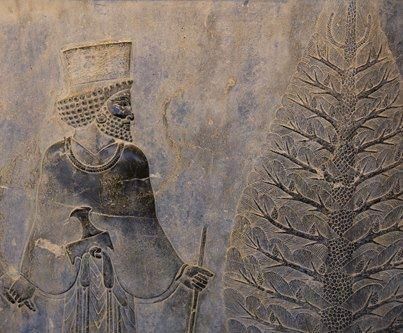
Turkmen Pattern

Islamic Pattern
Origin and Symbolism of the Paisley Pattern
The Paisley (Boteh Jegheh) pattern is one of the famous Iranian designs used in many Iranian arts and industries, especially carpet and rug weaving. The Paisley pattern, also known as “boteh jegheh,” is often depicted as a droplet-shaped motif and symbolizes Isymbolizesy when displayed in a head-to-foot orientation. The primary industries that have utilized the Paisley pattern include rug weaving, embroidery, tilework, shawl weaving, pottery, khatam (marquetry), and weaving. In the following, we will become more familiar with this pattern.

Paisley Pattern:
Paisley is a decorative motif that is serpentine in form and is primarily used in carpet weaving, embroidery, and termeh (a type of Iranian handwoven cloth). Jegheh, on the other hand, refers to a motif derived from bird feathers, which used to be placed on the hats of Iranian kings. The small, drooping jegheh represents humility and correctness among Iranians. Some experts and historians believe that the Paisley pattern represents an Indian plant, and its origin is traced back to India, from where it was brought to Iran. However, others consider this pattern not as Indian but as a symbol from Islam, Assyria, and even Achaemenid art, which later became popular in the Eastern world. According to evidence, jegheh is not an Indian plant; it is fundamentally a cypress, and its alleged Indian origin is refuted.
Origin of the Paisley Pattern:
There is still much debate among experts and historians about the origin of the Paisley pattern, and based on existing findings, its source is not unanimous among them. Nevertheless, substantial evidence suggests that the Paisley pattern is entirely Iranian. Its formation is associated with sacred fire, palm, pine, pear, leather bags, and the clenched fist pattern. In some cases, the Paisley and Jegheh pattern formation is considered Elamite and Assyrian, and it has been one of the arts of the Achaemenids. Many experts in this field also believe that the Paisley pattern with cypress is of Iranian origin and is considered one of the symbols of Zoroastrianism.
The cypress tree symbolizes freedom for the Iranian people, as it bends its head due to humility and modesty. Some others interpret it as a symbol of the resistance and steadfastness of Iran against the challenges of the time, and its bending indicates that it has been affected by unpleasant events. Another interpretation is that during the Mazdakian period, the cypress symbolized their freedom. After the enemies defeated Mazdak, it lowered its head as a sign of shame. In Dehkhoda’s dictionary, there is also a specific definition of this pattern, according to which it is made of bird feathers and was placed on the hats of Iranian kings.

Persepolis
Spread of the Paisley Pattern in the East:
The Paisley pattern gradually became popular in the East, to the extent that the sultans of the Ottoman Empire also designed their robes with this pattern. In 1949, in the Pazirik Valley in the Altai Mountains, excavations were carried out by Russian archaeologists, resulting in the discovery of an Iranian Pazirik carpet and other objects, including a leather flask with a Paisley pattern engraved on it. Due to its ancient age, tests on it estimated its history to be 2500 years old. This finding is, in fact, the oldest historical evidence of the Paisley and jegheh patJeghehIn the United States, the Paisley pattern is called Iranian pickles, indicating its global popularity associated with Iranians.

Types of the Paisley Pattern:
Various titles know the Paisley pattern, each referring to a specific design. Some famous ones include Jegheh, Mireh, Khergheh, Kaji, Qalamkar, Badami, Hashtpar, Afshar, Madar-o-Bacheh, and Shakh Gavazni. Some believe the Paisley pattern is highly diverse in various forms used in different arts and industries. Dr. Parham, the author of “Handicrafts of Nomadic and Rural Fars,” mentions that the Paisley pattern is a common des standard Iran widely used in ancient times in most Iranian handicrafts. He believes the Paisley pattern has undergone changes and transformations over time, resulting in 60 derivative designs. According to him, the most famous of these designs is the Bote Jegheh, and there is still much disagreement about its origin.
Structure of the Paisley Pattern:
The basis for the forming pattern is a curved line that starts slightly bent, known as the head bend. A continuity is created after a circular curve is formed at the starting point, and its rotation does not continue. A figure with a narrow head and a belly in the middle will be created in this rotation. Other similes are also mentioned about the structure of this pattern, such as likening it to almonds, pine fruit, raindrops, and an Indian parrot called Sogi.
The unique structure of this pattern has made it usable as one of the decorative elements in various contexts. In some arts, it is used as the main pattern, while in others, it is used in the margins. The Paisley pattern has had the most application in the carpet industry as a design.



















